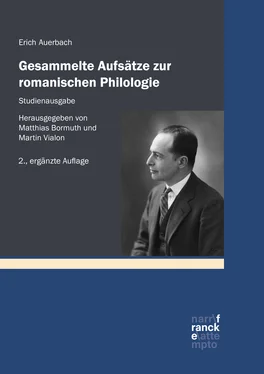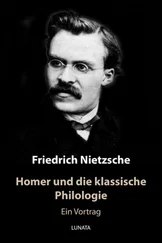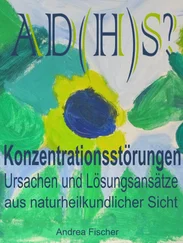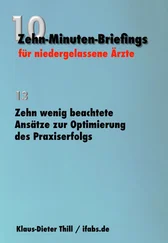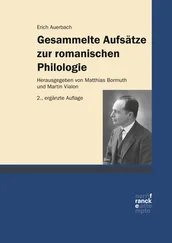Super vellus ros descendens
Et in rubo flamma spendens
Fuit Christus …
or:
Matris risus te signavit
Matrem ducis qui salvavit
In Aegypto populum.
Thus, the impression given by the figurative eulogy is that of a harmony of world history before Christ: all its events prefigure the same future fulfillment, the incarnation of Christ; they do not form a chain of horizontal evolution, but a series of vertical lines, originating from different points, all converging upon Christ: a converging adoration executed by world history. Biblical history, for this mediaeval approach, was world history; non-Biblical facts were admitted only in so far as they fitted into the figurative system.64
During the thirteenth century, in connection with the Franciscan movement and other similar trends, a new style of religious eulogy developed, based on a new approach to the history of salvation: an approach less figurative, less dogmatic, much more emotional, direct, and lyrical. The events of the incarnation and especially of the Passion appear once again as historical events, not veiled by figurative paraphrase, with a direct appeal to human pity and compassion. This style developed mostly in the vernacular languages, especially in Italian; still, there are a few very famous Latin examples such as the ‘Stabat Mater’.65 The figurative style meanwhile did not disappear; it continued to be cultivated, and there are frequent allusions to figurative motifs even in the popular and lyrical eulogies.
Most of these are too long to be quoted here in full; yet, I may give some Italian passages as specimens. There is a praise of the Virgin in the Laudi cortonesi del secolo XIII,66 beginning with the words
Ave, vergene gaudente,
madre de l’onnipotente,
and continuing with a rather loose and haphazard enumeration of traditional elements, dogmatic, figurative, and metaphoricalMetapher. There are, moreover, enumerations of the virtues of Mary which recall some of DanteDante’s verses:
Tu sei fede, tu sperança;
and later:
Tu thesauro, tu riccheçça,
tu virtude, tu largheçça,
tu se’mperial forteçça.
These all are traditional themes; there are, however, a few lines which touch a note not only more popular, but also more emotional:
– Quel te fo dolor de parto
Ke’l videre conficto’n quarto,
tutto’l sangue li era sparto
de la gran piaga repente.
– Quel dolor participasti,
giamai no l’abandonasti …
The great master of this emotional style in Italian religious poetry is Jacopone da TodiJacopone da Todi. His dramatic ‘laudaLauden’ describing the Virgin at the Passion ( Donna del Paradiso ) is almost as famous as the ‘Stabat mater’; but it does not contain a eulogy in the specific sense. There is another lauda, ‘De la beata Vergine Maria,’67 beginning with the words: O Vergen piu che femina … In its eulogy, Jacopone subordinates the dogmatic motifs (which are, nevertheless, very important and interesting for the history of dogma) to the chronological and historical order of the events; and after the description of Christ’s birth, he breaks through the normal frame of a eulogy with an outburst of highest emotion:
O Maria co facivi – quando tu lo vidivi?
or co non te morivi – de l’amore afocata?
Co non te consumavi – quando tu lo guardavi,
chè Dio ce contemplavi – en quella came velata?
Quand’esso te sugea – l’amor co te facea,
la smesuranza sea – esser da te lattata?
Quand’esso te chiamava – et mate te vocava,
co non te consumava – mate di Dio vocata?
This popular and emotional style keeps much closer to the historical or literal sense of the Gospels than does the figurative; the events of Christ’s incarnation and passion are continuously kept present; there is a dominant interest in their emotional value which prevents dogmatic and figurative themes from veiling them. On the other hand, the emotional eulogies share with the figurative ones the lack of a strict composition; they have no tendency towards condensation and concentration. In the figurative eulogies, the unity of the whole is maintained, to a certain extent, by the motif of ‘convergent harmony’ which I have tried to describe above; in the popular ones, this motif, though not lacking, is, at least, expressed in a less consistent manner. In reading them, one has the impression that additions or suppressions are possible without detriment to the whole. Most mediaeval authors of hymns do not feel the ambition to condense the content into a stringent and unalterable form, where every member is a necessary and indispensable part of a synthetic conception; the all-embracing conception was present to each of these poets; repetitionsWiederholung (rhetorische), variants and accumulations seemed to be legitimate, and were sometimes fostered by the liturgical purpose.
It is obvious that DanteDante’s eulogy presents something entirely new and different. He uses all the material of the tradition, historical, dogmatic, and figurative, but he condenses and organizes it. However, the lucidity produced by what seems to be a more conscious and rigorous planning is not only rational perspicuity, but poetic irradiation; the mystery, in the full light of this illumination, remains mystery. Thus, the prayerLobrede which no other man but DanteDante could have written, preserves the true spirit of Saint Bernard.
The first three stanzas (vv. 1–9) deal with the Virgin’s earthly part in the history of human salvation; vv. 1–3, containing the invocation, summarize this historical aspect.
The last three stanzaStanzes (vv. 13–21) deal with the Virgin’s permanent aspect as mother of grace and mediatress; vv. 19–21, finishing the eulogy, summarize this permanent aspect.
The verses 10–13, with their distinction between what Mary is in Heaven and what she is on earth, form the transition from the first to the second part.68
We shall now give a more detailed analysis with some comments.
The cumulated vocatives of the first verses are an old form, well known in Greek and Latin classical poetry, revived by early Christian hymns.69 Yet, no other specimen may easily be found so packed with content and so powerfully condensed; it is as magnificent as an inscription on a monument of victory,70 and as sweet as a poem of love. All its oxymoraOxymoron are traditional formulas, and all of them refer to the first part of the eulogy. Even umile ed alta , in this passage, is not meant in a general sense (as is magnificenza in the second part), but refers to Mary’s attitude during the annunciation. According to tradition, the Virgin is humble, for she immediately submits to God’s will (LukeLukas (Evangelist) 1, 38; cf. p. 133); she is alta not only because she is benedicta inter mulieres , i. e. in an objective sense, but also through her own attitude, which I prefer to characterize not in my own words, but in those of Saint Bernard:71
Ineffabili siquidem artificio Spiritus supervenientis tantae humilitati magnificentia tanta in secretario virginei cordis accessit, ut … hae quoque … fiant stellae ex respectu mutuo clariores, quod videlicet nec humilitas tanta minuit magnanimitatem, nec magnanimitas tanta humilitatem: sed cum in sua aestimatione tam humilis esset, nihilominus in promissionis credulitate magnanimis, ut quae nihil aliud quam exiguam sese reputaret ancillam, ad incomprehensibile hoc mysterium, ad admirabile commercium, ad inscrutabile sacramentum nullatenus se dubitaret electam, et veram Dei et hominis genitricem crederet mox futuram.
For termine fisso …, see p. 134.
The following stanzasStanze give, in an interweaving of historical and dogmatic elements, the account of human salvation. The first, with a stylistic movement of twofold graduation ( tu sei colei che …, and nobilitasti si, che …), describes the incarnation, using the traditional motif factor factus creatura . The second, starting again with the nativity, records the passion and the fruit of the passion, human salvation, the community of the beatified in Heaven. For the fervor of Christ’s love ( l’amore per lo cui caldo ) means his passion,72 and questo fiore , the white rose of the Empireo, is an old symbol of the resurrection, based on the interpretation of Biblical passages such as Cant. 2, 12: Flores apparuerunt in terra nostra, tempus putationis advenit .73
Читать дальше
